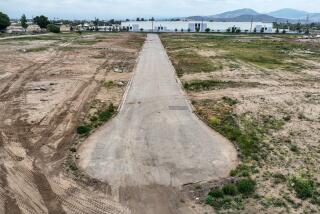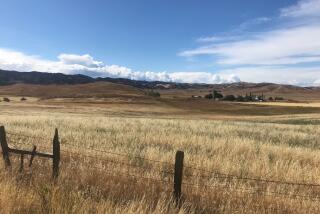S.D. Mission Construction Rejected : Historical Board Cites Environmental Report Discrepancy
- Share via
An apparent error in an environmental impact report prepared six years ago led the City of San Diego’s Historical Site Board on Wednesday to reject a controversial proposal by the Catholic Diocese to build on the ruins of Mission San Diego de Alcala.
By a 7-2 vote, the board held that a revised proposal to build a multipurpose center at the mission--which has been vehemently opposed by some archeologists and historians--was “substantially different” from the initial plans approved by the board in 1980. The difference, board members said, was that current blueprints show an 8,400-square-foot center being built on the site instead of the proposed 4,000-square-foot structure studied in a 1979 Environmental Impact Report.
Architect Alfonso Macy claimed that the size of his project has not significantly changed and that the environmental impact report must have been in error.
“We did not indicate any square footage whatsoever,” Macy said.
Macy’s view was shared by the city’s Planning Department, which had found the current plans to be “substantially in conformance” with the original proposal and recommended that the board approve the project.
“I didn’t really see the 4,000-foot thing as being a major issue,” said city planner Ron Buckley, secretary of the Historical Site Board. “What they saw down there (at Wednesday’s meeting) was essentially what was approved in 1980.”
The decision was hailed by members of the Committee for the Preservation of Mission San Diego de Alcala, who oppose the revised construction design because it calls for the building to be anchored by 20 large concrete cylinders or “caissons” which would be sunk into the ruins. The group had lobbied the board extensively, arguing that the caissons were not part of the project originally and could destroy artifacts.
But in his recommendation to the board, Buckley said that the caisson system, while not mentioned in the report, was clearly part of the plans presented to the board by Macy in 1980. This being the case, he said, the board had no legal option but to approve the proposal.
The board sidestepped the entire caisson issue, focusing instead on the discrepancy in the building size. Parties on both sides of the controversy concurred that this was the “most legally defensible” means of opposing the proposal.
“I think (the board members) were concerned about what the church could do legally,” said Ron May, chairman of the Fort Guijarros Museum Foundation and a member of the mission preservation committee. “I was told the church could sue the city (if the board unjustly rejected the proposal).”
Historical Site Board chairwoman Kathryn Willits said the board members probably would not have known about the technical basis for rejecting the project if it hadn’t been pointed out by one of the project’s opponents, Stan Berriman, president of the San Diego County Archeological Society.
The diocese must now apply to the Planning Department for a new Environmental Impact Report. The Historical Site Board has directed the city’s planning staff to “speed up” the review process.
More to Read
Sign up for Essential California
The most important California stories and recommendations in your inbox every morning.
You may occasionally receive promotional content from the Los Angeles Times.










